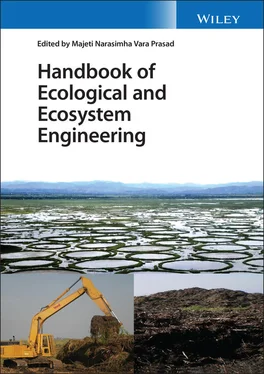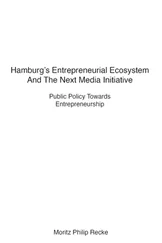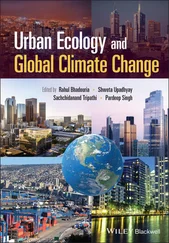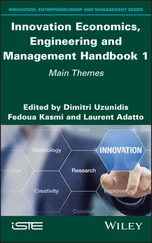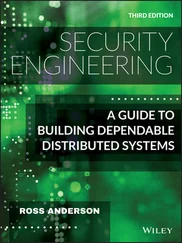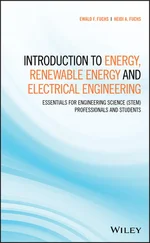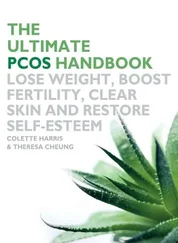121 121 Aguilera, P., Borie, F., Seguel, A., and Cornejo, P. (2019). How does the use of non‐host plants affect arbuscular mycorrhizal communities and levels and nature of glomalin in crop rotation systems established in acid andisols? In: Mycorrhizal Fungi in South America (eds. M. Pagano and M. Lugo), Fungal Biology, 147–158. Cham, Switzerland: Springer.
122 122 Zheng, S.J. (2010). Crop production on acidic soils: overcoming aluminium toxicity and phosphorus deficiency. Ann. Bot. 106: 183–184.
123 123 Kuswantoro, H. and Zen, S. (2013). Performance of acid‐tolerant soybean promising lines in two planting seasons. Int. J. Biol. 5: 49–56.
124 124 Konaka, T., Ishimoto, Y., Yamada, M. et al. (2019). Tolerance evaluation of Jatropha curcas and Acacia burkei to acidic and copper/nickel‐contaminated soil. J. Environ. Biol. 40: 1109–1114.
125 125 Awa, S.H. and Hadibarata, T. (2020). Removal of heavy metals in contaminated soil by phytoremediation mechanism: a review. Water Air Soil Pollut. 231: 1–15.
126 126 Ye, S., Zeng, G., Wu, H. et al. (2017). Biological technologies for the remediation of co‐contaminated soil. Crit. Rev. Biotechnol. 37: 1062–1076.
127 127 Ma, J.W., Wang, F.Y., Huang, Z.H., and Wang, H. (2010). Simultaneous removal of 2,4‐dichlorophenol and Cd from soils by electrokinetic remediation combined with activated bamboo charcoal. J. Hazard. Mater. 176: 715–720.
128 128 Ye, S., Zeng, G., Wu, H. et al. (2017). Co‐occurrence and interactions of pollutants, and their impacts on soil remediation – a review. Crit. Rev. Environ. Sci. Technol. 47: 1528–1553.
129 129 Ojuederie, O.B. and Babalola, O.O. (2017). Microbial and plant‐assisted bioremediation of heavy metal polluted environments: a review. Int. J. Environ. Res. Public Health 14: 1504.
130 130 Villa, R.D., Trovó, A.G., and Nogueira, R.F.P. (2008). Environmental implications of soil remediation using the Fenton process. Chemosphere 71: 43–50.
131 131 Akhtar, F.Z., Archana, K.M., Krishnaswamy, V.G., and Rajagopal, R. (2020). Remediation of heavy metals (Cr, Zn). Using physical, chemical and biological methods: a novel approach. SN Appl. Sci. 2: 267.
132 132 Cheng, M., Zeng, G., Huang, D. et al. (2016). Hydroxyl radicals based advanced oxidation processes (AOPs). For remediation of soils contaminated with organic compounds: a review. Chem. Eng. J. 284: 582–598.
133 133 Yao, Z., Li, J., Xie, H., and Yu, C. (2012). Review on remediation technologies of soil contaminated by heavy metals. Procedia Environ. Sci. 16: 722–729.
134 134 Sun, X., Meng, J., Huo, S. et al. (2020). Remediation of heavy metal pollution in soil by microbial immobilization with carbon microspheres. Int. J. Environ. Sci. Dev. 11: 43–47.
135 135 Yadav, K.K., Singh, J.K., Gupta, N., and Kumar, V. (2017). A review of nanobioremediation technologies for environmental cleanup: a novel biological approach. J. Mater. Environ. Sci. 8: 740–757.
136 136 Pauwels, M., Willems, G., Roosens, N. et al. (2008). Merging methods in molecular and ecological genetics to study the adaptation of plants to anthropogenic metal‐polluted sites: implications for phytoremediation. Mol. Ecol. 17: 109–119.
137 137 Coppa, E., Astolfi, S., Beni, C. et al. (2020). Evaluating the potential use of Cu‐contaminated soils for giant reed (Arundo donax, L.). cultivation as a biomass crop. Environ. Sci. Pollut. Res. 27: 8662–8672.
138 138 Manoj, S.R., Karthik, C., Kadirvelu, K. et al. (2020). Understanding the molecular mechanisms for the enhanced phytoremediation of heavy metals through plant growth promoting rhizobacteria: a review. J. Environ. Manag. 254: 109779.
139 139 Patra, D.K., Pradhan, C., and Patra, H.K. (2020). Toxic metal decontamination by phytoremediation approach: concept, challenges, opportunities and future perspectives. Environ. Technol. Innov. 18: 100672.
140 140 Gomes, H.I. (2012). Phytoremediation for bioenergy: challenges and opportunities. Environ. Technol. Rev. 1: 59–66.
141 141 Yang, Y., Zhou, X., Tie, B. et al. (2017). Comparison of three types of oil crop rotation systems for effective use and remediation of heavy metal contaminated agricultural soil. Chemosphere 188: 148–156.
142 142 Zhou, J., Chen, L.H., Peng, L. et al. (2020). Phytoremediation of heavy metals under an oil crop rotation and treatment of biochar from contaminated biomass for safe use. Chemosphere 247: 125856.
143 143 Papazoglou, E.G. and Fernando, A.L. (2017). Preliminary studies on the growth, tolerance and phytoremediation ability of sugarbeet (Beta vulgaris L.). grown on heavy metal contaminated soil. Ind. Crop. Prod. 107: 463–471.
144 144 Parrish, D.J. and Fike, J.H. (2005). The biology and agronomy of switchgrass for biofuels. Crit. Rev. Plant Sci. 24: 423–459.
145 145 Ruiz‐Olivares, A., Carrillo‐González, R., González‐Chávez, M.C.A., and Soto‐Hernández, R.M. (2013). Potential of castor bean (Ricinus communis L.). for phytoremediation of mine tailings and oil production. J. Environ. Manag. 114: 316–323.
146 146 Bauddh, K., Singh, K., Singh, B., and Singh, R.P. (2015). Ricinus communis: a robust plant for bio‐energy and phytoremediation of toxic metals from contaminated soil. Ecol. Eng. 84: 640–652.
147 147 Pidlisnyuk, V., Stefanovska, T., Lewis, E.E. et al. (2014). Miscanthus as a productive biofuel crop for phytoremediation. Crit. Rev. Plant Sci. 33: 1–19.
148 148 Barbosa, B. and Fernando, A.L. (2018). Aided phytostabilization of mine waste. In: Bio‐Geotechnologies for Mine Site Rehabilitation (eds. M.N.V. Prasad, P.J.C. Favas and S.K. Maiti), 147–157. UK: Elsevier Inc.
149 149 Barbosa, B., Boléo, S., Sidella, S. et al. (2015). Phytoremediation of heavy metal‐contaminated soils using the perennial energy crops Miscanthus spp. and Arundo donax L. Bioenergy Res. 8: 1500–1511.
150 150 Shaheen, S., Ahmad, R., Mahmood, Q. et al. (2019). Gene expression and biochemical response of giant reed under Ni and Cu stress. Int. J. Phytoremediation 21: 1474–1485.
151 151 Iram, S., Basri, R., Ahmad, K.S., and Jaffri, S.B. (2019). Mycological assisted phytoremediation enhancement of bioenergy crops Zea mays and Helianthus annuus in heavy metal contaminated lithospheric zone. Soil Sediment Contam. 28: 411–430.
152 152 Rengasamy, P. (2006). World salinization with emphasis on Australia. J. Exp. Bot. 57: 1017–1023.
153 153 Bui, E.N. (2013). Soil salinity: a neglected factor in plant ecology and biogeography. J. Arid Environ. 92: 14–25.
154 154 Dahlhaus, P.G., Cox, J.W., Simmons, C.T., and Smitt, C.M. (2008). Beyond hydrogeologic evidence: challenging the current assumptions about salinity processes in the Corangamite region, Australia. Hydrogeol. J. 16: 1283.
155 155 Nackley, L.L. and Kim, S.H. (2015). A salt on the bioenergy and biological invasions debate: salinity tolerance of the invasive biomass feedstock Arundo donax. Glob. Change Biol. Bioenergy 7: 752–762.
156 156 Sánchez, E., Scordia, D., Lino, G. et al. (2015). Salinity and water stress effects on biomass production in different Arundo donax L. clones. Bioenergy Res. 8: 1461–1479.
157 157 Romero‐Munar, A., Baraza, E., Gulías, J., and Cabot, C. (2019). Arbuscular mycorrhizal fungi confer salt tolerance in giant reed (Arundo donax l.) plants grown under low phosphorus by reducing leaf NA+ concentration and improving phosphorus use efficiency. Front. Plant Sci. 10: 843.
158 158 Stavridou, E., Hastings, A., Webster, R.J., and Robson, P. (2017). The impact of soil salinity on the yield, composition and physiology of the bioenergy grass Miscanthus × giganteus. Glob. Change Biol. Bioenergy 9: 92–104.
159 159 Burnham, M., Eaton, W., Selfa, T. et al. (2017). The politics of imaginaries and bioenergy sub‐niches in the emerging Northeast U.S. bioenergy economy. Geoforum 82: 66–76.
Читать дальше
